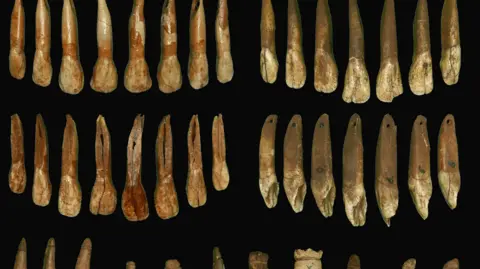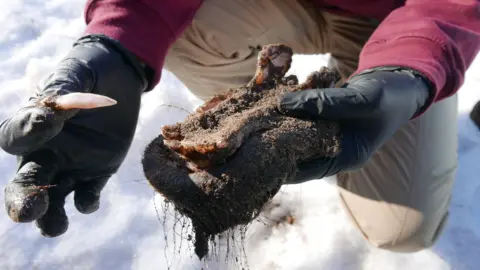Stone Age animal teeth pulling a 'social activity'
 University of Helsinki
University of HelsinkiPrehistoric people used a culinary method similar to modern slow cooking to extract animal teeth for jewellery, archaeologists have found.
Researchers from the University of York and University of Helsinki said the discovery showed Stone Age societies treated animal remains with "care".
They said their findings suggested tooth extraction was a social activity and probably involved children.
The researchers carried out experiments at a cemetery in eastern Latvia, where more than 2,000 animal teeth from 7,500 to 2,500 BC had been excavated.
Dr Andrew Needham, experimental archaeologist, said: "By testing different methods, it became clear that methods like cutting, hammering or pulling the teeth out of a fresh jaw is extremely difficult and often damages the teeth in the process.
"But what we see in these thousands of animal teeth at grave sites is that they are usually complete and undamaged by any extraction method."
 University of York
University of YorkThe teeth, most commonly derived from elk, wild boar and red deer, would be made into ornaments for the body and clothing.
The researchers noted that this practice of cooking gives an insight into the relationship between humans and animals at the time, with Stone Age people leaving little waste behind from animal remains.
Dr Aimée Little, from the University of York's department of archaeology, said: "Making personal ornaments from teeth was likely to have been a social activity linked to everyday cooking activities.
"It is easy to imagine that different members of Stone Age societies, including small children, were involved in their making, with the first stage of extracting teeth from mandibles happening as meals were being prepared."
Listen to highlights from North Yorkshire on BBC Sounds, catch up with the latest episode of Look North.
